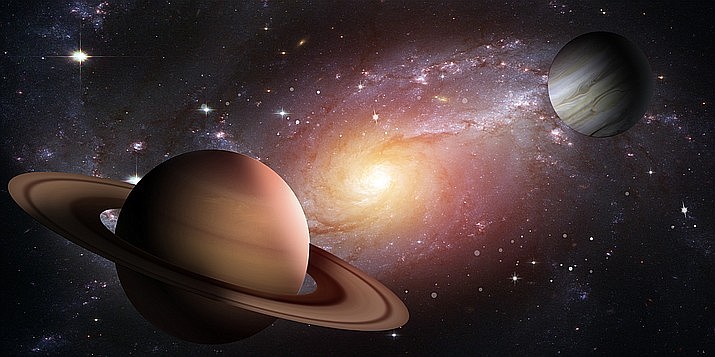Rare 'Christmas star' will appear when Jupiter and Saturn align Dec. 21
Jupiter and Saturn have gradually been moving closer to each other for months, and on Dec. 21 the two worlds will be at their closest creating a brilliant point of light called the "Christmas Star" or "Star of Bethlehem."
These conjunctions occur every 20 years, but this year will be particularly special because the planets will be separated by just one-fifth the diameter of a full moon or 0.1 degrees. The last time this celestial event, called the "great conjunction," was observable by humans on Earth was March 4, 1226.
According to NASA, on Dec. 21, the gas giants will look like two points of light in the sky during this winter solstice's celestial event. Saturn, which is farther from Earth, will be a bit fainter than Jupiter, but the conjunction will still be quite a striking sight.
Best viewing
Typically the best conditions for stargazing involve a dark sky, so getting away from urban areas can improve your view. However, the Jupiter and Saturn conjunction will be easily bright enough to see from any location. The Christmas Star effect it creates will be visible to the naked eye across the U.S. in the early night of Dec. 21, weather permitting. Look toward the low southwestern horizon right after sunset.
If clouds, poor weather or need for sleep cause you to miss the main event on that peak viewing Monday, Jupiter and Saturn will still appear to be close from Dec. 16 to Dec. 25.
- Driver identified in fatal accident on Perkinsville Road Sept. 19
- Latest Tik Tok challenges causing problems for Williams Unified School District
- Search at Grand Canyon turns up remains of person missing since 2015
- Plane wreckage and human remains found in Grand Canyon National Park
- Pumpkin Patch Train departs Williams starting Oct. 5
- Update: Man missing in Grand Canyon National Park hike found alive
- Receding water levels at Lake Powell reveal missing car and driver
- Man sentenced for attack on camper at Perkinsville
- Column: Lumber prices expected to stay high through 2022
- Elk rut season in Grand Canyon: What you need to know
SUBMIT FEEDBACK
Click Below to:






